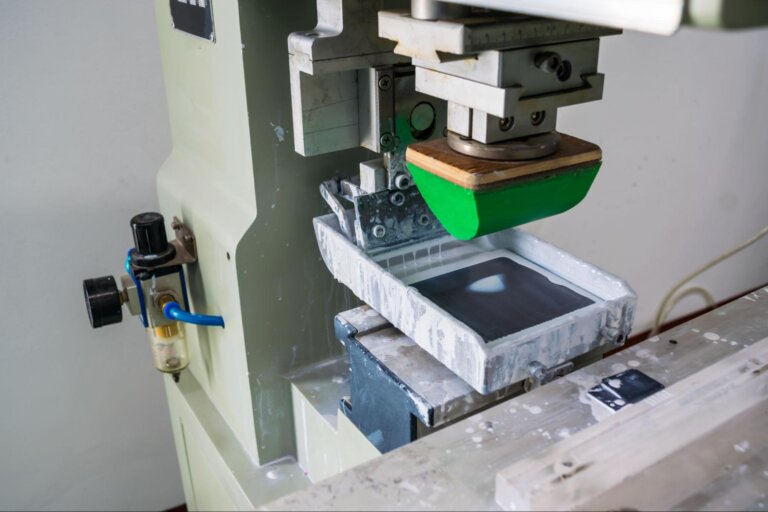Time to read: 11 min
Low-volume injection molding is a fast and efficient way to produce plastic parts in volumes from 100 to 10,000 pieces. It’s sometimes used for prototyping mature part designs that require real-world testing. Yet low-volume injection molding can also bridge the gap between pre-production prototyping and the full-scale production of hundreds of thousands of parts.
Fictiv is different from other plastic injection molding services because we typically use low-volume molds made from steel instead of aluminum. These soft or semi-hardened steel tools cost less than the hardened steel molds used in high-volume injection molding, and they’re generally ready in less than two weeks for shorter injection molding lead times.
Importantly, low-volume steel molds can support the creation of complex parts with a high degree of injection molding quality. Compared to low-volume rapid injection molding with 3D-printed molds, steel molds last longer and can achieve part designs with tighter tolerances and finer features.
This article examines steel tools for low-volume injection molding, how low-volume injection molding works, and when to use it for prototyping or production. In addition, you’ll learn how to design parts for low-volume injection molding, how injection molds are made, and how to ensure your project’s success with expert design for manufacturing (DFM) assistance.
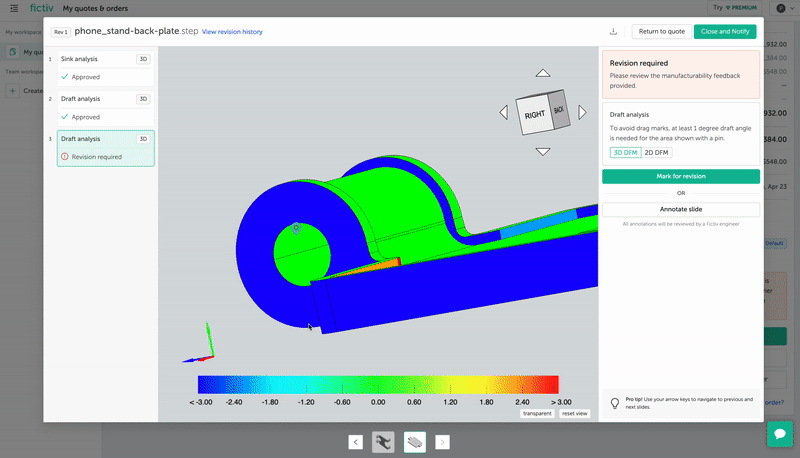
How Low-Volume Plastic Injection Molding Works
The low-volume injection molding process begins when plastic pellets or granules are poured into a hopper that’s connected to an injection molding machine. Typically, this equipment is smaller than the machinery used with high-volume injection molding. In addition to a smaller footprint, low-volume injection molding machines are designed for faster changeovers because the production runs are smaller.
After the plastic pellets or granules leave the hopper, the feedstock is dispensed into a barrel where the plastic is heated and melted into a liquid. A large reciprocating screw pushes the molten material toward the lip of the barrel while raising the injection molding pressure and temperature. As with high-volume injection molding, achieving and maintaining the proper temperature and pressure is essential for avoiding injection molding defects.
Filling the Mold
When enough material and pressure build up inside the barrel, a ram pushes the screw toward the injection mold. This forces a “shot” of plastic out of the barrel into a system of channels in the mold called “runners.” From the runners, the molten plastic passes through openings called “gates” and into the mold cavity. This hollow section of the mold fills with plastic, which then cools.
There are two types of runner systems in low-volume injection molding: hot and cold. Hot runner systems cost more but help reduce defects associated with fluctuating pressure levels and underfilled molds. Cold runner systems cost less but tend to generate more material waste. Still, the cost-effectiveness of cold runner systems can make them attractive for low-volume injection molding projects.
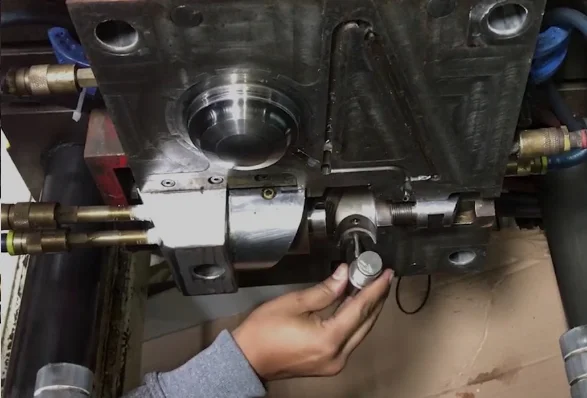
Ejecting the Part
When an injection molded part is ready, the mold is opened and the part is released with ejector pins that are attached to the mold core. Sometimes, part ejection also requires hand loads or sliders and lifters. Sliders release external undercuts—recesses or projections on a part’s outer surface that prevent direct removal from the mold cavity. Lifters release internal undercuts instead.
Hand loads cost less than sliders or lifters, but still add injection molding costs since each hand load must be removed from a molded part and then returned to the tool during the next molding cycle. Nevertheless, hand loads are a cost-effective choice for low-volume injection molding for prototyping or production. These release mechanisms can also support complex part geometries such as threads.
Post-Processing
After injection molding is complete, post-processing may be required. For example, excess plastic material called “flash” may escape between the parting line where the mold’s core and cavity meet. Some amount of flash is expected, but excessive flash requires removal because it mars part surfaces. A skilled injection molder can reduce the incidence of flash.
Clamping pressure is the force needed to hold the injection mold closed. If pressure isn’t set high enough, the mold may open prematurely and produce flashing. Yet the injection mold also needs to be able to withstand the clamping pressure from the injection molding machine. Typically, the smaller equipment for low-volume injection molding has a lower clamping pressure than a high-volume injection molding machine.
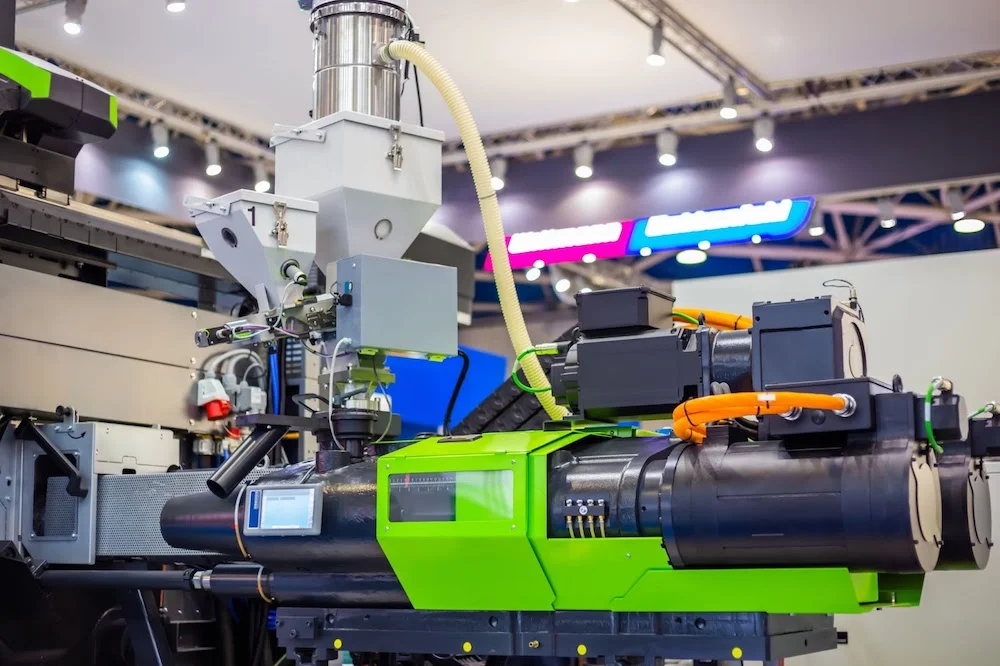
When to Use Low-Volume Injection Molding
Low-volume injection molding has specific applications for prototyping and production. Whether you’re just starting out or have an existing design, it’s worth considering the relationship between 3D printing and plastic injection molding so that you understand when to use these complementary processes. Fictiv provides both types of services, along with CNC machining and urethane casting.
Rapid Prototyping
3D printing is ideal for early-stage projects with less than 100 parts and lead times of 1 to 15 days. There’s a point at which it makes sense to switch from 3D printing to prototype injection molding, however, and it’s largely a function of design maturity, part volumes, and testing requirements. There are different ways to categorize design maturity, but proof-of-concept, looks-like, and works-like prototypes are all early-stage.
Sometimes, early-stage prototypes aren’t ready for injection molding. The quantities are too low, or the part design is immature and could change significantly during rapid prototyping. If you spread the cost of an injection mold across a handful of parts, it’s hard to justify the expense of tooling. In addition, major design changes can require extensive tooling changes, which add injection molding costs and longer project timelines.
Prototypes with mature designs are less likely to require significant tooling modifications. Plus, designers may need these pre-production prototypes in quantities that justify the cost of an injection mold. Depending on the nature of your project and its testing requirements, you may also need injected molded prototypes for a first article inspection (FAI).
For example, let’s say you’re designing a medical device that you plan to injection mold. You could use 3D printing for your early-stage prototypes and iterate your design without paying for or waiting for tooling. However, 3D-printed plastics don’t have the same end-use properties as their injection-molded counterparts. For an FAI, you’ll need to use the same material and the same process as production.
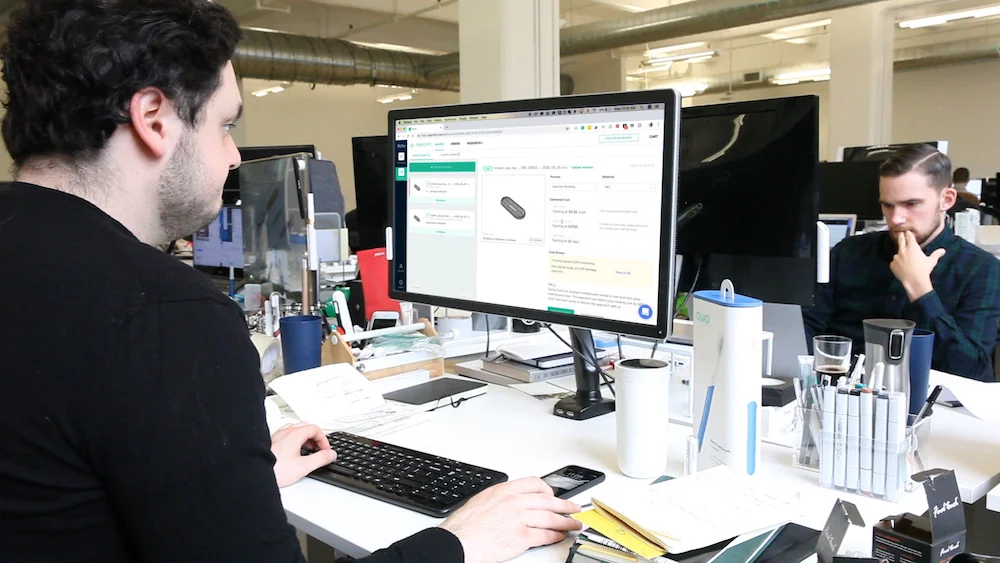
Short-Run Production
Low-volume injection molding is used for short-run production with volumes ranging from 1,000 to 10,000 parts. Because low-volume molds cost less than high-volume tools, it’s possible to justify the cost of a low-volume injection mold by spreading it out across several thousand parts. Still, the economics of low-volume injection molding aren’t the only reason to invest in bridge tooling.
During low-volume production, an injection molder can identify and resolve any tooling-related issues that require part design changes. A molder can also optimize machine and process parameters before making more expensive high-volume injection molds. Modeling and simulation software can also highlight potential problems, but low-volume injection molding actually puts parts in your hands.
If you’re scaling up from 3D printing to injection molding, you’ll benefit from the DFM feedback that Fictiv provides. 3D printing and injection molding use different file types, but you’ll need to do more than just convert your STL files to CAD files. 3D printing has different design rules than injection molding, and you may decide that it’s better to injection mold a complex 3D printed part as multiple pieces.
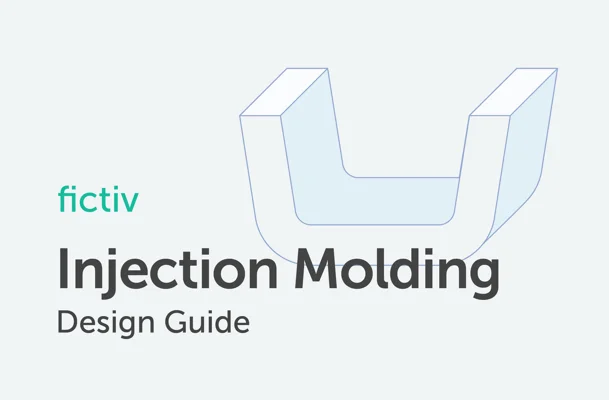
Part Design for Low-Volume Injection Molding
Designing a part for low-volume injection molding begins with material selection for the end-use properties your application requires. You can choose either commodity plastics or specialty plastics and polymer blends. Commodity plastics cost less and have lower minimum order quantities (MOQs). Specialty plastics cost more and have higher MOQs.
Low-Volume Injection Molding Materials and Resin Selection
The table below describes some of the thermoplastics you can choose for low-volume injection molding.
| Plastic | Characteristics |
| Acetal (POM) | Excellent rigidity and thermal stability with low water absorption and good chemical resistance. |
| Acrylic (PMMA) | Strong, lightweight, shatter-resistant, optically clear, and UV and weather-resistant. |
| Acrylonitrile Butadiene Styrene (ABS) | Strong and impact-resistant, even at low temperatures. |
| Nylon (PA) | Tough with high heat resistance, high abrasion resistance, and good fatigue resistance. |
| Polybutylene Terephthalate (PBT) | Resistant to creep and used in parts with thin cross-sections. |
| Polycarbonate (PC) | Strong, lightweight, and naturally transparent, with stable properties over a wide temperature range. |
| Polyether Ether Ketone (PEEK) | Excellent mechanical properties and resistance to chemicals and thermal degradation. |
| Polyetherimide (PEI) | Combines stiffness and stability with low flammability and low smoke production. |
| Polyethylene (PE) | Generally used for indoor applications. Chemically resistant. Includes high and low-density polymer materials. |
| Polyphenylsulfone (PPSU) | High toughness, high flexural and tensile strength, and good resistance to chemicals and heat. |
| Polypropylene (PP) | Good chemical resistance and won’t degrade when exposed to moisture or water. |
| Polystyrene (PS) | Lightweight, relatively inexpensive, and resistant to moisture and bacterial growth. |
| Thermoplastic Elastomer (TPE) | Processed like plastic but has the properties and performance of rubber. |
| Thermoplastic Polyurethane (TPU) | Rubber-like elasticity with good load-bearing capabilities. |
These aren’t the only injection molded plastics you can select, and there are hundreds of different polymers in various brands, types, and grades. There are also injection molding materials like glass-filled nylon where the addition of specialized fillers increases part strength.
Injection Molding Design Guidelines
The injection molding material that you select determines the range of wall thicknesses that you can apply to your part. Avoid designing walls that are too thick because they’ll require more plastic material and a longer injection molding cycle time, both of which add costs to your projects. Avoid designing walls that are too thin because they may trap air and cause short shots that result in incomplete parts.
Wall thickness is just one of many design considerations, but Fictiv’s “Injection Molding Design Guide” covers them all. In addition to transitions, corners, and draft, you’ll find guidelines for ribs, bosses, and part tolerances. You’ll also learn where to locate injection mold features such as gates and ejector pins to optimize your part design.
Download the Injection Molding Design Guide
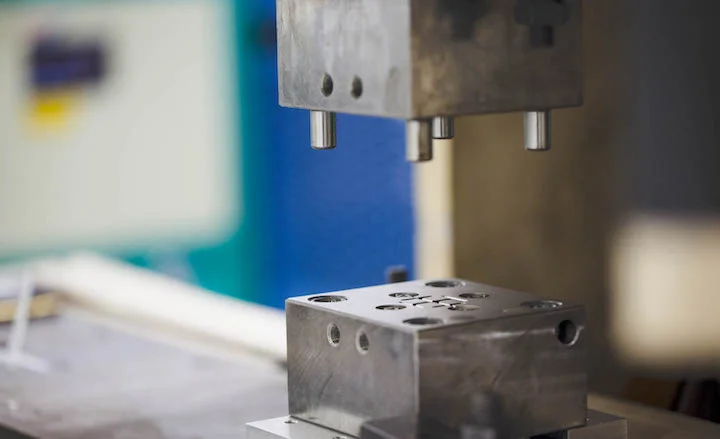
Mold Making for Low-Volume Injection Molding
The quality of the mold, or tool, in low-volume injection molding is critical to the quality of your parts. The injection mold is also a major cost driver, but there are ways to control tooling costs, such as mold making speed and mold complexity.
Standalone Molds vs. MUD Molds
For low-volume injection molding, you can choose either standalone molds or MUD molds. There are advantages and disadvantages to each.
Standalone molds include the core, cavity, and all of the other tooling components needed for plastic injection molding. This includes metal plates for mounting the mold within the injection molding machine. Molds with more components have higher tooling costs, but the only practical limitation on part size is the size of the injection mold that the machine will support.
Master unit die (MUD) inserts, or MUD molds, are universal frames that fit into an injection molding machine and hold a removable insert. The frame size limits the maximum part size, but MUD inserts can reduce up-front tooling costs since you’re using an existing frame. Your mold production costs are also lower because only the removable core and cavity require machining.
Mold Materials: Aluminum vs. Steel
Most injection molds are made of aluminum or steel. Conventional wisdom holds that steel molds are too expensive for lower part volumes and that aluminum is the only cost-effective choice. However, that’s not necessarily the case. While it’s true that high-volume injection molds are made of more expensive steels, Fictiv offers low-volume injection molds made of steels that cost less.
Most Fictiv customers begin with a single-cavity tool made of P20 or NAK80 steel instead of aluminum. These soft and semi-hardened steels are harder than aluminum, a relatively soft metal. That’s important because a harder mold supports tighter tolerances, finer finishes, and reduced wear. When used by a skilled injection molder, a quality mold can produce complex parts that meet tough requirements.
Part Tolerances
Injection molds made of P20 and NAK80 steels can produce parts with tight tolerances for smaller dimensional variations between parts. That’s important for form, fit, and function testing, and for the tolerance stack-ups in assemblies of several different parts. Aluminum molds support tolerances down to +/- 0.005 inches. By contrast, steel molds can achieve injection molding tolerances as tight as +/-0.001 inches.
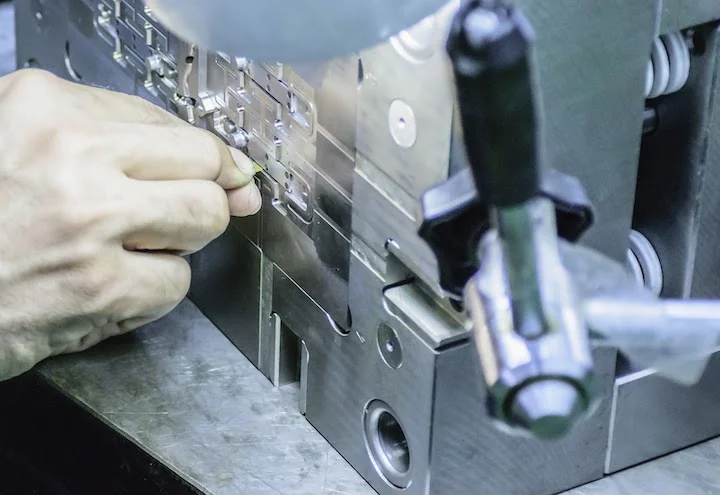
Mold Finish
Injection molding can apply a specific type of surface finish to plastic parts. Toward the end of the mold-making process, polish or texture is applied to the injection mold. Then, during the injection molding process, the finish is transferred from the surface of the mold to the surfaces of plastic parts. Steel molds take more time to produce, but they can mold parts with a surface finish that aluminum tools can’t match.
Mold Wear
Some injection molded plastics cause tooling to wear more quickly. Even when you’re injection molding a relatively low volume of parts, you still want a mold to last as long as the project. Abrasive materials such as glass-filled nylon cause softer aluminum molds to wear out more quickly. Corrosive materials such as PVC and POM can also eat away at aluminum.
Temperature Control
Aluminum molds heat up more quickly, but a steel injection mold is better at maintaining heat. That’s important with injection molded plastics such as polycarbonate, which has a higher processing temperature than many other polymers. It’s also important for low-volume injection molds that use hand loads, which require precise temperatures for molding quality and part-to-part consistency. Proper injection molding temperature control also helps to avoid part defects, such as sink marks and warping.
Mold Design and Mold Manufacturing: CNC vs. EDM
There are two main ways to make low-volume injection molds: computerized numerical control (CNC) machining and electrical discharge machining (EDM). CNC machining is used more commonly and features a sharp cutting tool that removes metal. EDM machining uses electrical discharges (sparks) to cut through the metal instead. There are advantages and disadvantages to both mold manufacturing methods.
CNC machining is faster than EDM and is recommended for low-volume injection molds where the mold design includes ribs. When five-axis (or greater) mills are used, CNC machining is also a good choice for complex geometries. EDM machining is slower, but it’s used when sharp internal corners are needed and very deep cuts are required. EDM machining is also used to produce molds for parts that require a mirror finish.
Succeeding with Low-Volume Injection Molding
Low-volume injection molding is used to produce prototype parts in quantities greater than 100. It’s also used for production volumes up to 10,000 pieces. Fictiv typically uses molds made from P20 and NAK80 steels, and these tools are generally ready for parts production in about two weeks. Fictiv can provide you with low-volume aluminum molds if you need them, but steel molds have tighter tolerances and finer finishes. They’re also longer-wearing.
Do you need complex injection molded parts at ridiculous speeds? Then create a free Fictiv account and upload your part drawing. You’ll receive expert DFM feedback along with our response to your request for a quote, and you’ll gain access to a carefully vetted network of injection molders.









